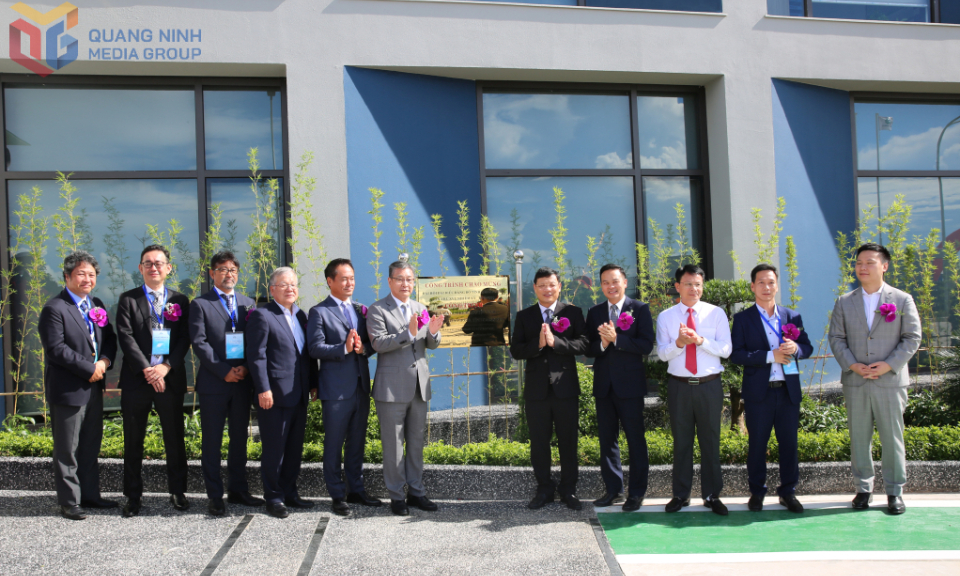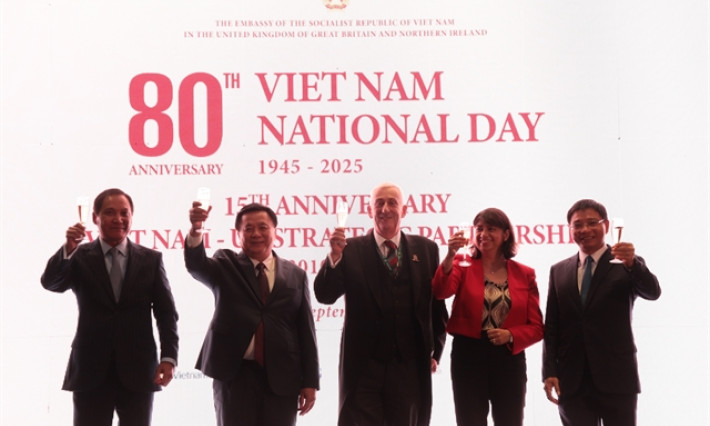Bát Xát's terraced rice fields come alive in the rainy season
From mid-May, the terraced fields in Bát Xát are flooded ready for the harvest and as people in the northern highlands only cultivate one rice crop a year the rainy season is a totally unique and only fleeting experience, not to be missed.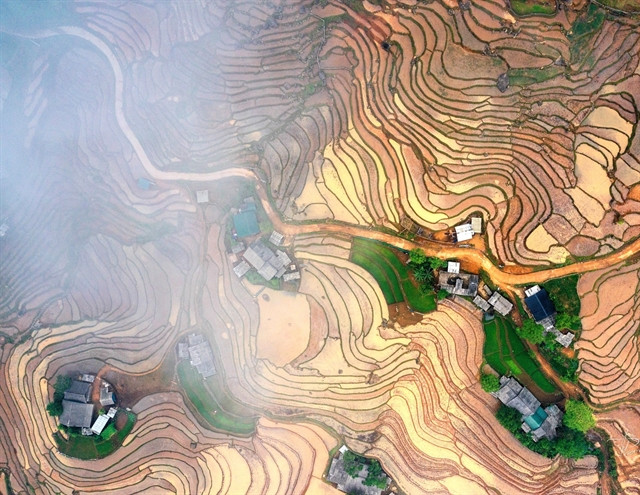
If tourists are looking for a tourist destination that is both majestic, with mountains and hills, while still romantic, with trees and flowers, Bát Xát District is a place worth visiting.
Not flowing along straight lines like the rice fields in the delta, the terraced fields in Bát Xát District, Lào Cai Province are like rounded stairs leading up to the sky, creating a truly beautiful landscape.
From mid-May the terraced fields in Bát Xát are brought alive in the rainy season. People in the northern highlands only cultivate one rice crop a year, so this is a unique time, colourful and beautiful. The surface of the field is flooded layer by layer, reflecting the many colours of nature from the golden brown of the soil, purple green of algae, to the green of young plants and the yellow of the sun.

Bát Xát District is about 52km from Lào Cai City, over an hour by car. The terrain here is 70 per cent hilly, with more than 1,000 hectares of undulating terraced fields.
When the first rains of summer begin, it is also the time when people go to the fields to plant, awakening the dry land after cold winter days to prepare for a new crop. Terraced fields in the rainy season are something special for tourists visiting the mountainous villages of Lào Cai.
When tourists come to Bát Xát, they can see terraced fields winding around the hillsides everywhere. Streams of water continuously flow from one step to another, weaving through the heaving rocks, running into each field, until the water floods the ground, reflecting all of those vivid colors. It comes together to create a beautiful natural painting of the rice steps in rainy season.
For hundreds of years, the fields here have been created by the diligent hands of farmers known as 'Barefoot Sculptors', Mông, Dao and Hà Nhì people who have lived and worked these lands for generations.
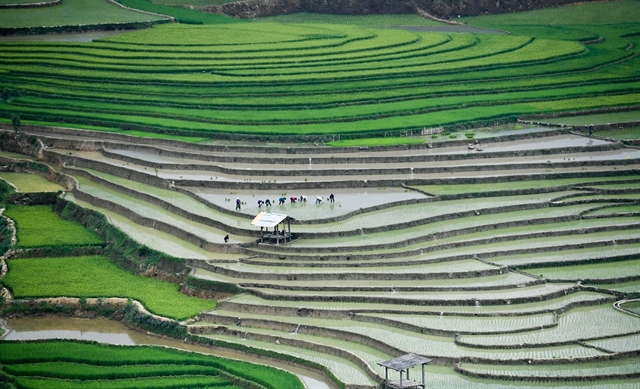
Terraced fields were built to take advantage of a narrow area of mountainous land and steep hills, creating an optimal irrigation system and increasing agricultural productivity. Most of the rice field landscape in Bát Xát has the same terrain, stacked fields, surrounded by hills and mountains. The terraced fields stretch from the bottom of the valley to the mountains, forming dense layers for the harvest and with the banks of the fields lower than other areas, stunning and colourful reflections in the water.
The terraced fields are distributed across all communes, notably Thề Pả valley located in Y Tý, Ngải Thầu Communes and some communes such as Mường Hum, Dền Sáng, Dền Thàng. They reflect the history and hard work associated with each ethnic group, who work hard to cultivate the crops on the steep hills.
Thề Pả terraced rice heritage complex is not only an attractive tourist destination, but also carries many cultural and historical values, ranked by the Ministry of Culture, Sports and Tourism as a national scenic spot.
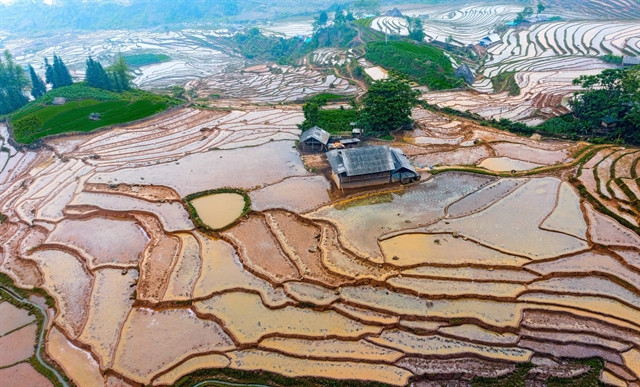
Every year, the rainy season attracts visitors and photographers keen to capture the moments when the water flows and the farmers work the terrain to grow rice.
"This season, field water flows from one field level to another, carrying the colour of the silt mixed with the colour of the reflected sky, making me feel like I'm looking at a painting," photographer Phạm An said.
Tourists arriving in Bát Xát District can also experience the diversified cultural life of people in the region, from the special cuisine of Hà Nhì, featured festivals of the Mông people and wedding ceremonies of the Dao and Giáy people.

